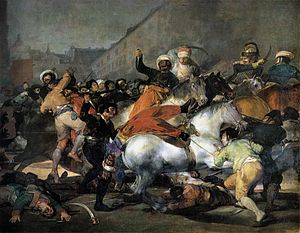Private Life of a Masterpiece Episode 6: Francisco Goya - The Third of May 1808 (BBC Documentary)
The Third of May 1808 (also known as El tres de mayo de 1808 en Madrid, or Los fusilamientos de la montaña del Príncipe Pío, or Los fusilamientos del tres de mayo) is a painting completed in 1814 by the Spanish painter Francisco Goya, now in the Museo del Prado, Madrid. In the work, Goya sough
t to commemorate Spanish resistance to Napoleon's armies during the occupation of 1808 in the Peninsular War. Along with its companion piece of the same size, The Second of May 1808 (or The Charge of the Mamelukes), it was commissioned by the provisional government of Spain at Goya's suggestion.
The painting's content, presentation, and emotional force secure its status as a groundbreaking, archetypal image of the horrors of war. Although it draws on many sources from both high and popular art, The Third of May 1808 marks a clear break from convention. Diverging from the traditions of Christian art and traditional depictions of war, it has no distinct precedent, and is acknowledged as one of the first paintings of the modern era. According to the art historian Kenneth Clark, The Third of May 1808 is "the first great picture which can be called revolutionary in every sense of the word, in style, in subject, and in intention".
The Third of May 1808 has inspired a number of other major paintings, including a series by Édouard Manet, and Pablo Picasso's Massacre in Korea and Guernica.
| The Third of May 1808 by Francisco Goya, showing Spanish resisters being executed by Napoleon's troops. (Photo credit: Wikipedia) |
| English: Prado Museum, in Madrid (Spain). Español: Museo del Prado, en Madrid (España). (Photo credit: Wikipedia) |
| The Second of May 1808 or The Charge of the Mamelukes (Photo credit: Wikipedia) |



